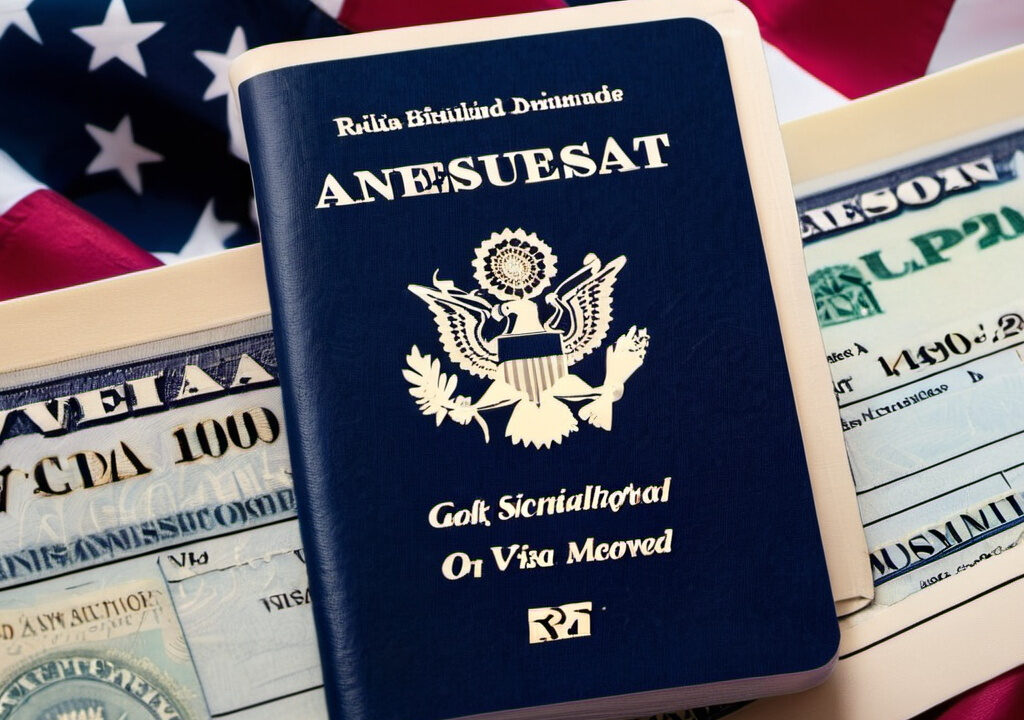The R-1 visa is a non-immigrant visa that allows foreign nationals to work in the United States in a religious capacity for a U.S.-based religious organization. This visa is designed for individuals such as ministers, religious workers, missionaries, and other religious professionals. If you’re looking to apply for an R-1 visa, understanding the necessary steps is crucial for a smooth process. This detailed guide will walk you through the complete steps, from eligibility to receiving your visa.
Step 1: Determine Eligibility for the R-1 Visa
Before beginning the application process, it’s important to ensure that both the applicant and the religious organization meet the eligibility criteria for an R-1 visa.
Applicant Requirements:
- Religious Worker: The applicant must be a member of a religious denomination having a bona fide nonprofit religious organization in the U.S.
- Membership Duration: The applicant must have been a member of the religious denomination for at least two years before the application.
- Purpose of Entry: The applicant should be coming to the U.S. to work as a minister, in a professional religious capacity, or in a religious occupation, either on a part-time or full-time basis.
For more information, you can speak to Happy Face
Organization Requirements:
- Nonprofit Status: The U.S.-based religious organization must be a nonprofit entity and must be tax-exempt under Internal Revenue Code section 501(c)(3).
- Religious Function: The organization must engage primarily in religious activities and support the applicant’s religious work.
Step 2: Employer Files Form I-129 (Petition for a Nonimmigrant Worker)
Once eligibility is confirmed, the U.S.-based religious organization (referred to as the petitioner) needs to file Form I-129, Petition for a Nonimmigrant Worker, with the U.S. Citizenship and Immigration Services (USCIS). This form is required to prove that the organization is a legitimate religious institution and that the applicant qualifies for an R-1 visa.
Key Documents Required:
- Proof of Nonprofit Status: A copy of the religious organization’s tax-exempt status (IRS letter of determination).
- Proof of Employment: A job offer letter specifying the applicant’s role, job duties, and duration of employment.
- Evidence of Religious Membership: Documentation that shows the applicant has been a member of the religious denomination for at least two years.
- Religious Worker Credentials: Depending on the role, additional documents such as ordination certificates for ministers or proof of specialized religious training may be required.
USCIS Fees:
- There is a filing fee associated with Form I-129. Be sure to check the current fee on the USCIS website.
Processing Time:
- The processing time for Form I-129 can vary. It typically takes a few months, but premium processing is available for an additional fee to expedite the process.
For more information, you can speak to Happy Face
Step 3: USCIS Site Visit (If Required)
In many cases, the USCIS will conduct a site inspection of the religious organization before approving the petition. This inspection is to ensure that the organization is a legitimate entity conducting bona fide religious activities. USCIS officers may interview staff, review documentation, and inspect the premises.
What to Expect:
- The site visit will likely include verification of the religious organization’s operations, confirmation of its nonprofit status, and an evaluation of how the applicant will be involved in religious work.
Step 4: Petition Approval (Form I-797)
Once the USCIS approves the Form I-129 petition, the religious organization and the applicant will receive an approval notice (Form I-797). This form indicates that USCIS has approved the R-1 petition, allowing the applicant to proceed to the next step, which depends on whether the applicant is already in the U.S. or applying from abroad.
If Inside the U.S.:
- If the applicant is already in the U.S. on a different visa (like a student or tourist visa), they may apply for a change of status to an R-1 visa. This process also requires filing Form I-539, Application to Extend/Change Nonimmigrant Status.
If Outside the U.S.:
- If the applicant is outside the U.S., they will need to apply for the R-1 visa at a U.S. embassy or consulate in their home country.
Step 5: Apply for the R-1 Visa at a U.S. Embassy or Consulate (If Abroad)
Applicants who are outside the U.S. must schedule a visa interview at a U.S. embassy or consulate in their home country after the Form I-129 petition is approved. This step is known as consular processing.
Required Documents for the Visa Interview:
- Form DS-160: Complete the online Nonimmigrant Visa Application form DS-160 and print the confirmation page.
- Form I-797 Approval Notice: Bring the USCIS approval notice for your I-129 petition.
- Passport: The applicant must have a valid passport for at least six months beyond the intended stay in the U.S.
- Photographs: Passport-style photos, meeting the U.S. visa photo requirements.
- Visa Fee Payment: Pay the required visa application fee and bring proof of payment.
- Additional Documents: Bring any other supporting documents that demonstrate the applicant’s qualifications and the organization’s eligibility, such as employment letters, financial statements of the organization, and proof of religious work.
The Visa Interview:
- The consular officer will ask questions related to the applicant’s religious background, the religious organization they will be working for, and their job duties in the U.S.
- The officer may also inquire about the applicant’s ties to their home country and their intent to return after the R-1 visa period ends.
For more information, you can speak to Happy Face
Step 6: R-1 Visa Approval and Entry to the U.S.
If the visa is approved, the applicant will receive the R-1 visa in their passport, allowing them to enter the U.S. to work for the sponsoring religious organization.
Port of Entry:
- Upon arrival in the U.S., the applicant will present their visa and supporting documents to U.S. Customs and Border Protection (CBP) officers at the port of entry.
- The CBP officer will determine the length of the applicant’s stay (usually up to 30 months initially, with the possibility of an extension up to 5 years).
Step 7: R-1 Visa Extensions or Change of Status
If the applicant wishes to continue working beyond the initial period, the religious organization can file for an extension of stay using Form I-129. Extensions can be granted in increments but cannot exceed a total of 5 years in R-1 status.
Step 8: Transition to Permanent Residency (Optional)
Some R-1 visa holders may decide to pursue permanent residency (green card) in the U.S. based on their religious work. This can be done through the Special Immigrant Religious Worker Program (EB-4). The religious organization would need to sponsor the applicant for a green card by filing Form I-360, Petition for Amerasian, Widow(er), or Special Immigrant.
For more information, you can speak to Happy Face
Key Considerations:
- R-1 visa holders must demonstrate their intent to return to their home country when applying for the visa. However, they can later apply for permanent residency through the EB-4 program if they meet the criteria.
The R-1 visa process involves multiple steps, starting from filing Form I-129 by the religious organization to obtaining the visa at a U.S. embassy or consulate. Proper preparation, timely submission of documents, and understanding each phase can help make the process smoother. For applicants considering long-term residency, the R-1 visa can also serve as a pathway to obtaining a green card through the EB-4 category.








